Master of ceremonies Philippe Parreno brings the Turbine Hall to life
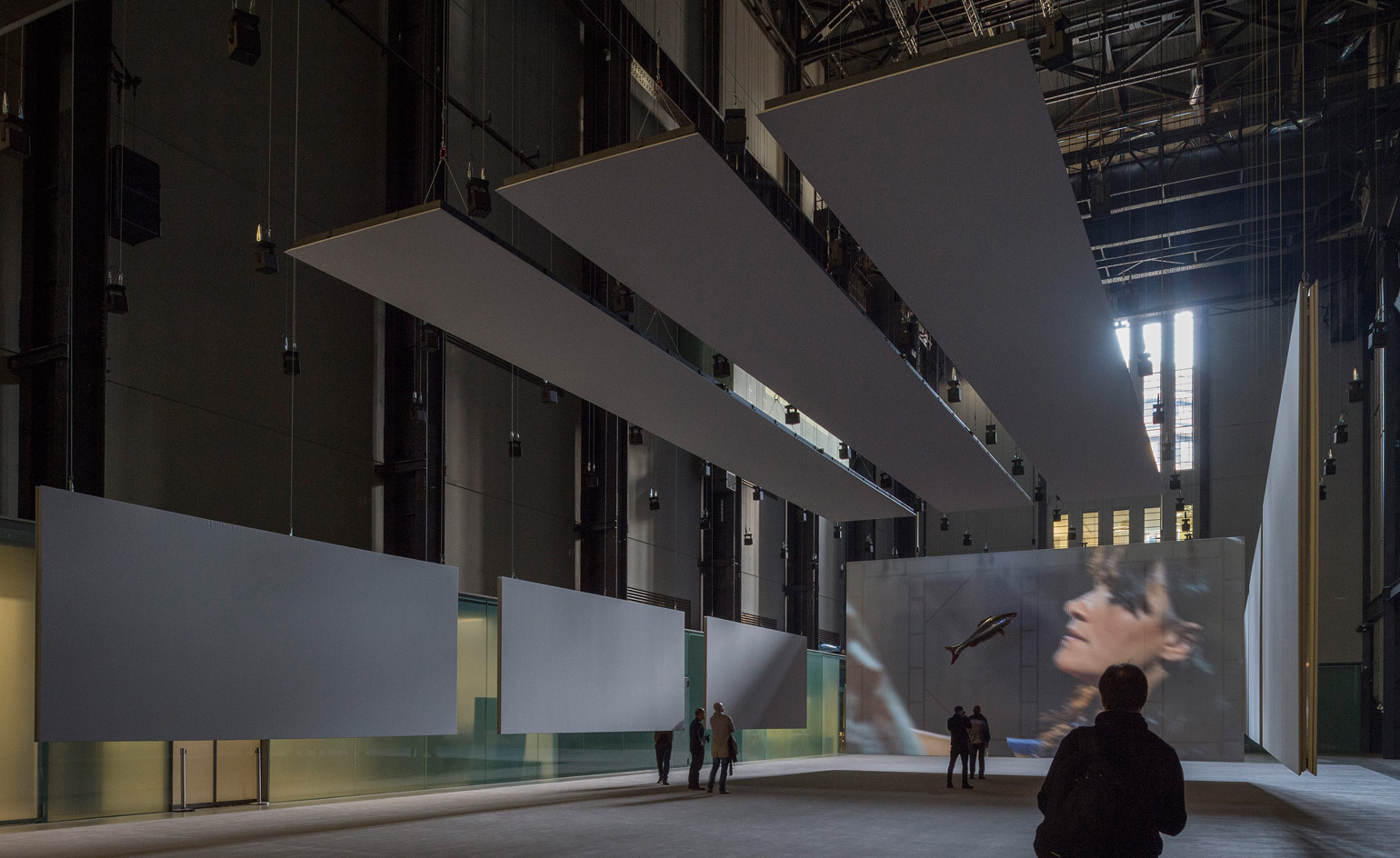
When Herzog and de Meuron’s highly anticipated Switch House extension opened at the Tate Modern in June this year, the cavernous Turbine Hall that was once a ‘dead end’ within the museum became its heart; a space that leads visitors across from the original riverside building to the new galleries.
It was a change of circulation that was closely observed by the Hall’s latest resident, French artist Philippe Parreno, whose installation Anywhen opens today as the second in a new series of annual site-specific Turbine Hall commissions sponsored by Hyundai.
A master of the immersive, Parreno is the perfect candidate to take on the halls’ cavernous space – he was famously the first artist to take on all 22,000 sq m at the Palais de Tokyo in 2013 and just last year he filled New York’s gargantuan Park Avenue Armory with his show, 'H {N)Y P N(Y} OSIS’.
‘There has never been a project that has used the Turbine Hall in this way,’ says Tate assistant curator Vassilis Oikonomopoulos of Parreno’s typically immersive installation, ‘not topologically, not technically or even architecturally.’
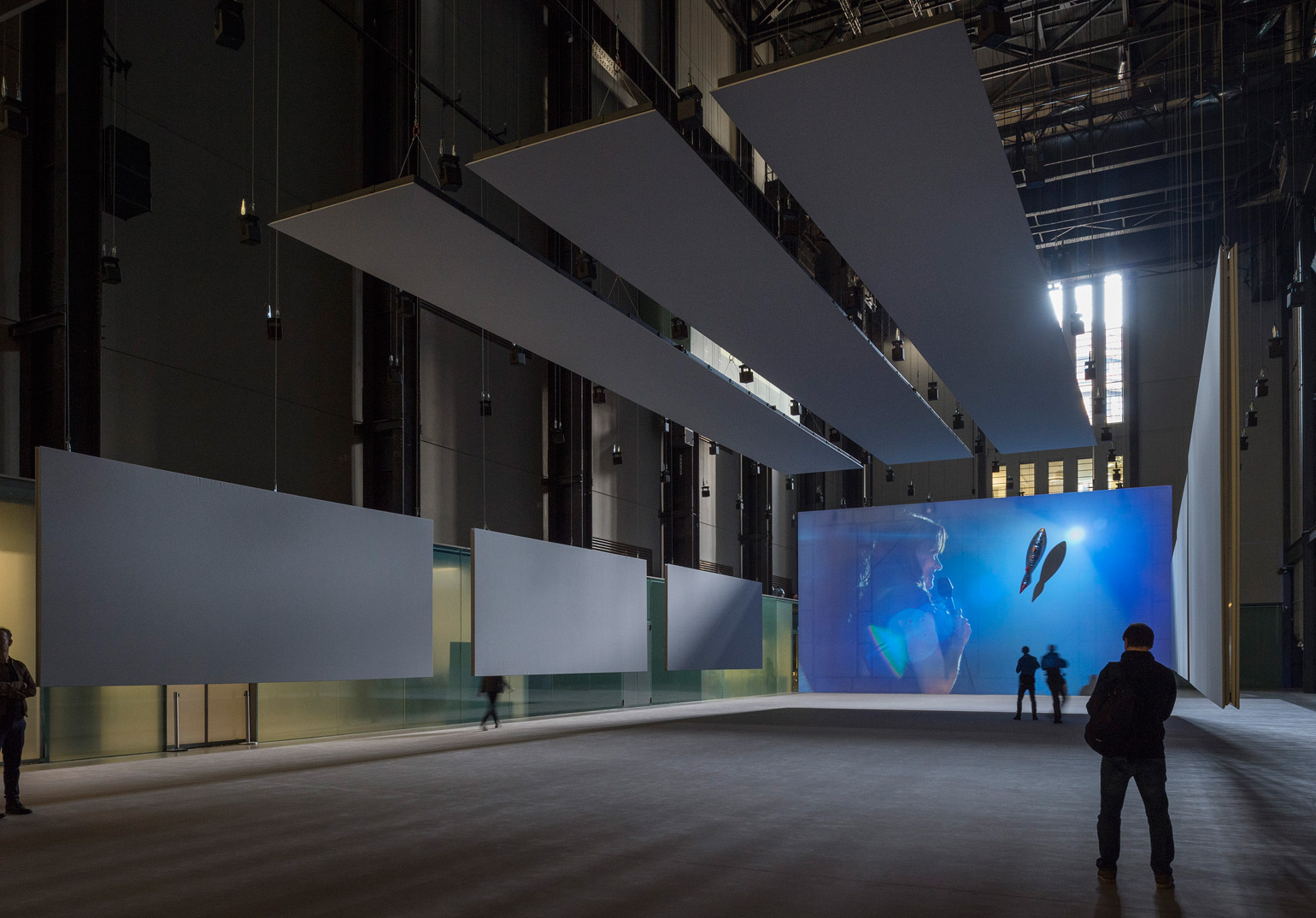
A new hypnotic video work features a performance by ventriloquist Nina Conti. Courtesy of Tate Photography.
Keen to extract elements of the Hall and integrate them into his ‘living’ exhibition, Parreno became the first ever artist with a Turbine commission to go and talk to the architects, visiting Jacques Herzog and Pierre de Meuron at their offices in Basel in order to better understand the design of the space.
The result is an exhibition that sees Parreno ‘playing’ the Hall like an instrument, so that visitors approaching from all entrances can't help but be drawn into the spectacle. As music and sound designed by Nicolas Becker with Cengiz Hartlap blares out, the Turbine’s light boxes flash in time, a temporary cinema space gracefully drops down from the ceiling and a shoal of inflatable fish float serenely past. A ghost-like white marquee – a familiar accoutrement from the Parreno toolbox – is installed on the Turbine Hall’s Level 1 bridge alongside a moving spotlight (made in collaboration with Liam Gillick) that snakes through the hall on a rail casting beautiful shadows as it goes. Elsewhere, the outside is brought inside in the form of daylight from the Hall’s towering windows as well as live sounds that have been recorded on microphones placed in and around the building.
The suspended cinema space, that consists of one vast screen, a grid of speakers and a series of vertical and horizontal acoustic panels engineered by Kvadrat, glides up and down in various configurations, occasionally stopping to show one of two films including a new hypnotic work that features underwater footage of a brilliant bioluminescent cuttlefish as well as a performance by ventriloquist Nina Conti.
Here, beneath the suspended cinema, visitors are encouraged to stop and sit on the specially-installed carpet; to take a moment to get lost in the experience, creating what the artist calls a ‘temporary community’. ‘The fact that it’s a free exhibition changes the perspective,’ says Oikonomopoulos. ‘The opportunities are much bigger for creating a more diverse community. It won’t just be your typical museum visitors here; unexpected types of people will come in that have no idea about Philippe or his work.’
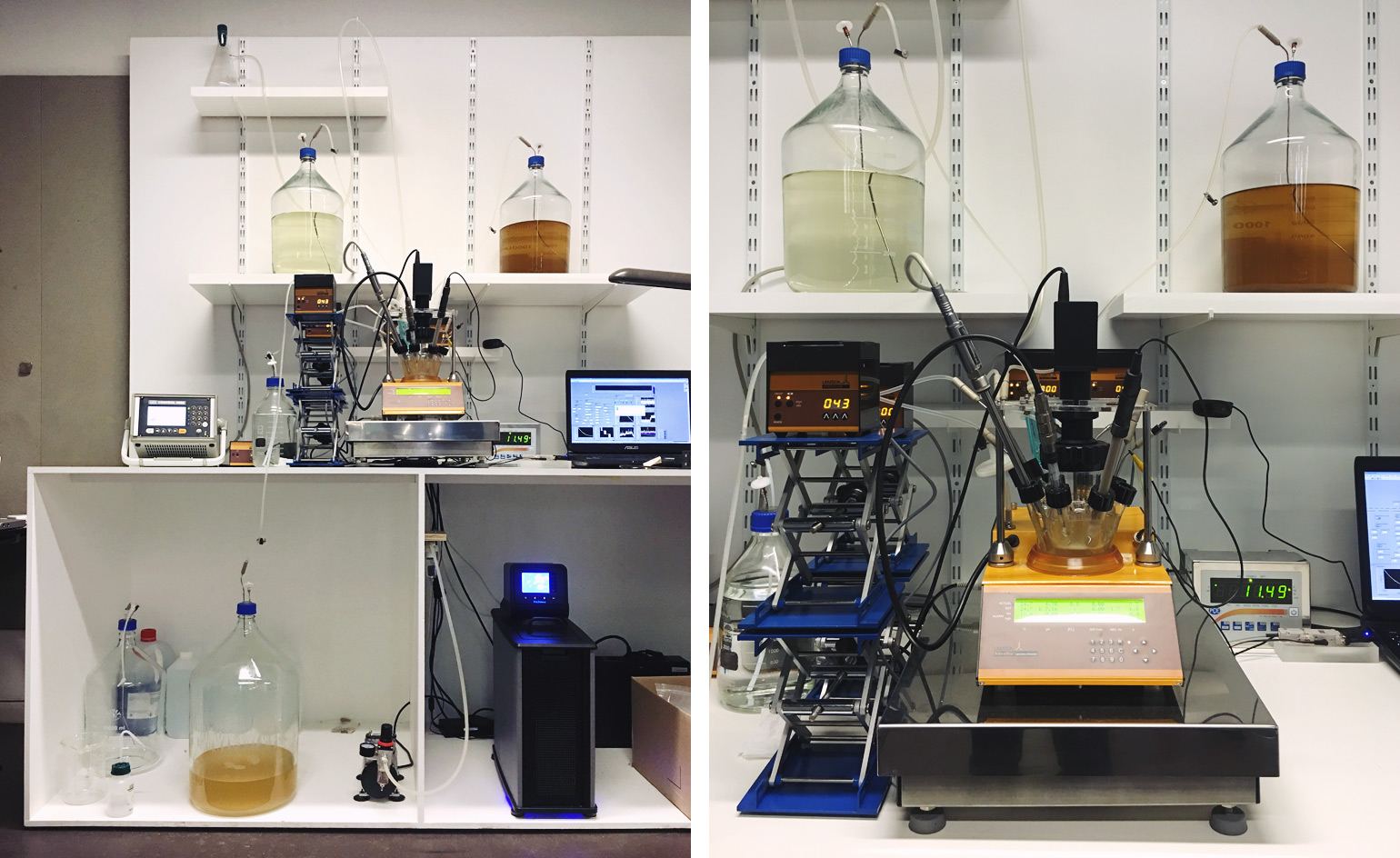
The mysterious bioreactor installed at the back of the hall was engineered by scientists Jean-Baptiste Boulé and Nicolas Desprat. Photography: Antonio Camera.
Another defining feature of Anywhen is that, unlike previous Parreno exhibitions, there will be no loop of planned sequences. Instead its form will be more organic, constantly changing throughout the day and even over the course of its six-month lifespan so that every visitor has a new experience. This is, in part, due to a mysterious bioreactor that is installed at the back of the hall.
Conceived and engineered by scientists Jean-Baptiste Boulé and Nicolas Desprat, the bioreactor was first introduced by Parreno as part of ‘IF THIS THEN ELSE’, an exhibition held earlier this year at the Gladstone Gallery. Connected to sensors on the roof and within the hall, the laboratory set-up, which can be viewed through a glass screen, is fed information about changes in light and humidity. In response to the data, the microorganisms within the bioreactor create patterns that will then trigger sequences of movement within the space.
As a whole, the effect is beguiling; like being inside a disorientating collage made up of layers of natural and artificial sound and light that eradicate any sense of perspective or scale. ‘We had no idea how poetic it would be and how many surprises we would have,’ says Oikonomopoulos of the six-week installation process. ‘When there are so many elements and they finally come together the combination of them often left us speechless.’
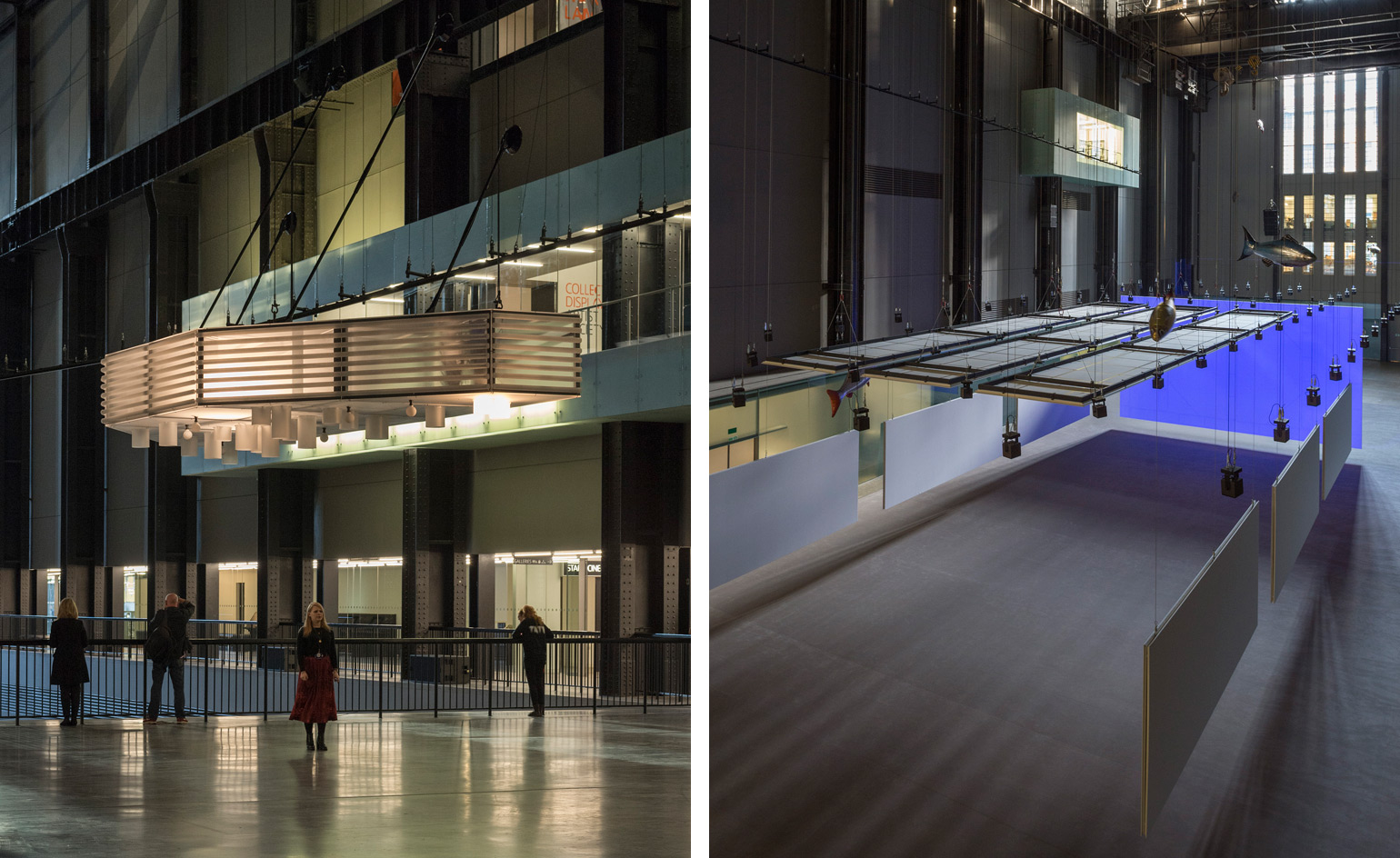
Pictured left: a ghost-like white marquee is installed on the Turbine Hall’s Level 1 bridge. Right: the suspended, gliding cinema space occasionally stops to show one of two films. Courtesy of Tate Photography.
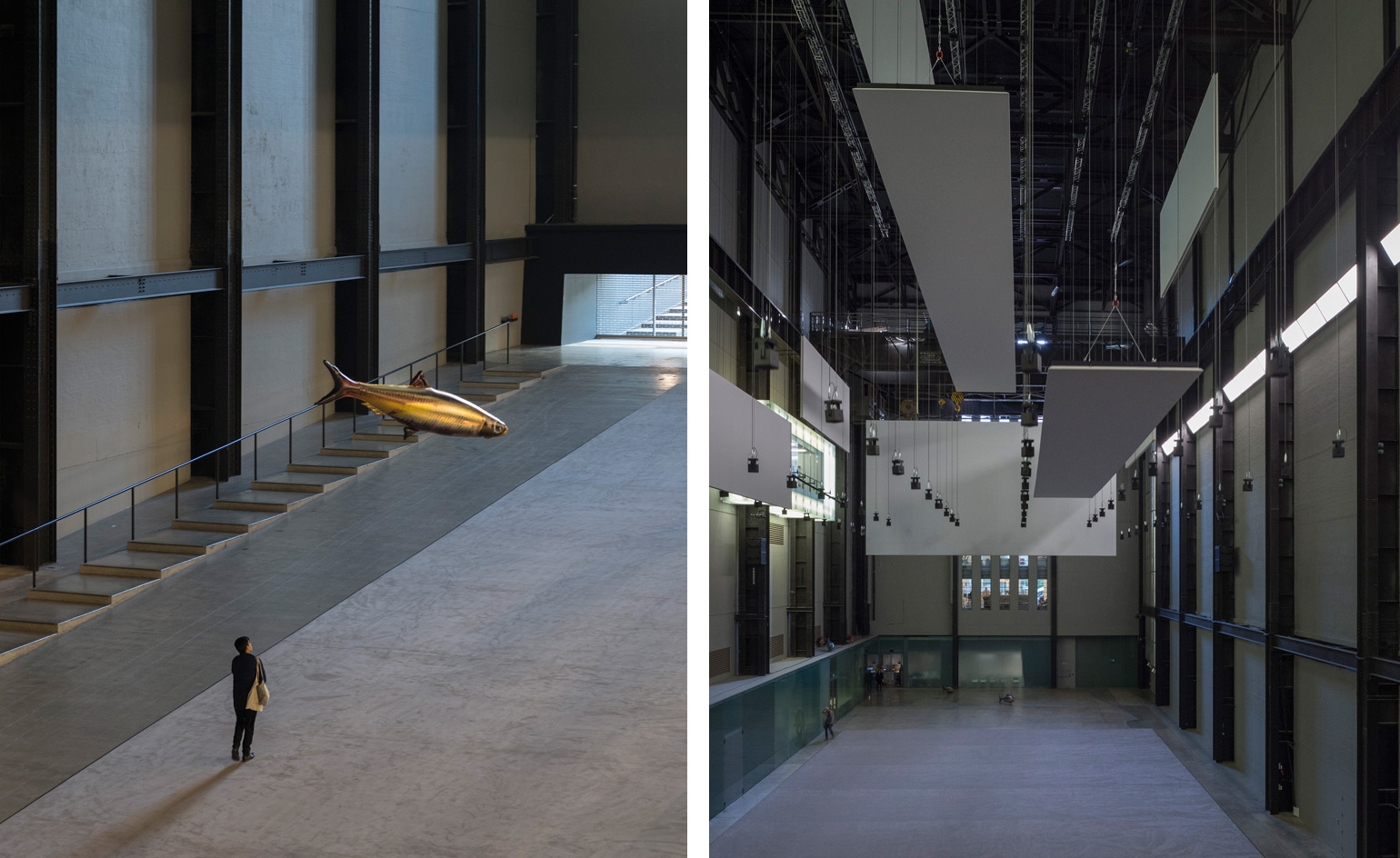
Here, beneath the suspended cinema, visitors are encouraged to stop and sit on the specially-installed carpet; to take a moment to get lost in the experience, creating what the artist calls a ‘temporary community’. Courtesy of Tate Photography.
INFORMATION
'Hyundai Commission: Philippe Parreno', supported by Kvadrat, is on view until 2 April 2017. For more information, visit the Tate Modern's website.
ADDRESS
Tate Modern
Bankside
London, SE1 9TG
Receive our daily digest of inspiration, escapism and design stories from around the world direct to your inbox.
Ali Morris is a UK-based editor, writer and creative consultant specialising in design, interiors and architecture. In her 16 years as a design writer, Ali has travelled the world, crafting articles about creative projects, products, places and people for titles such as Dezeen, Wallpaper* and Kinfolk.
-
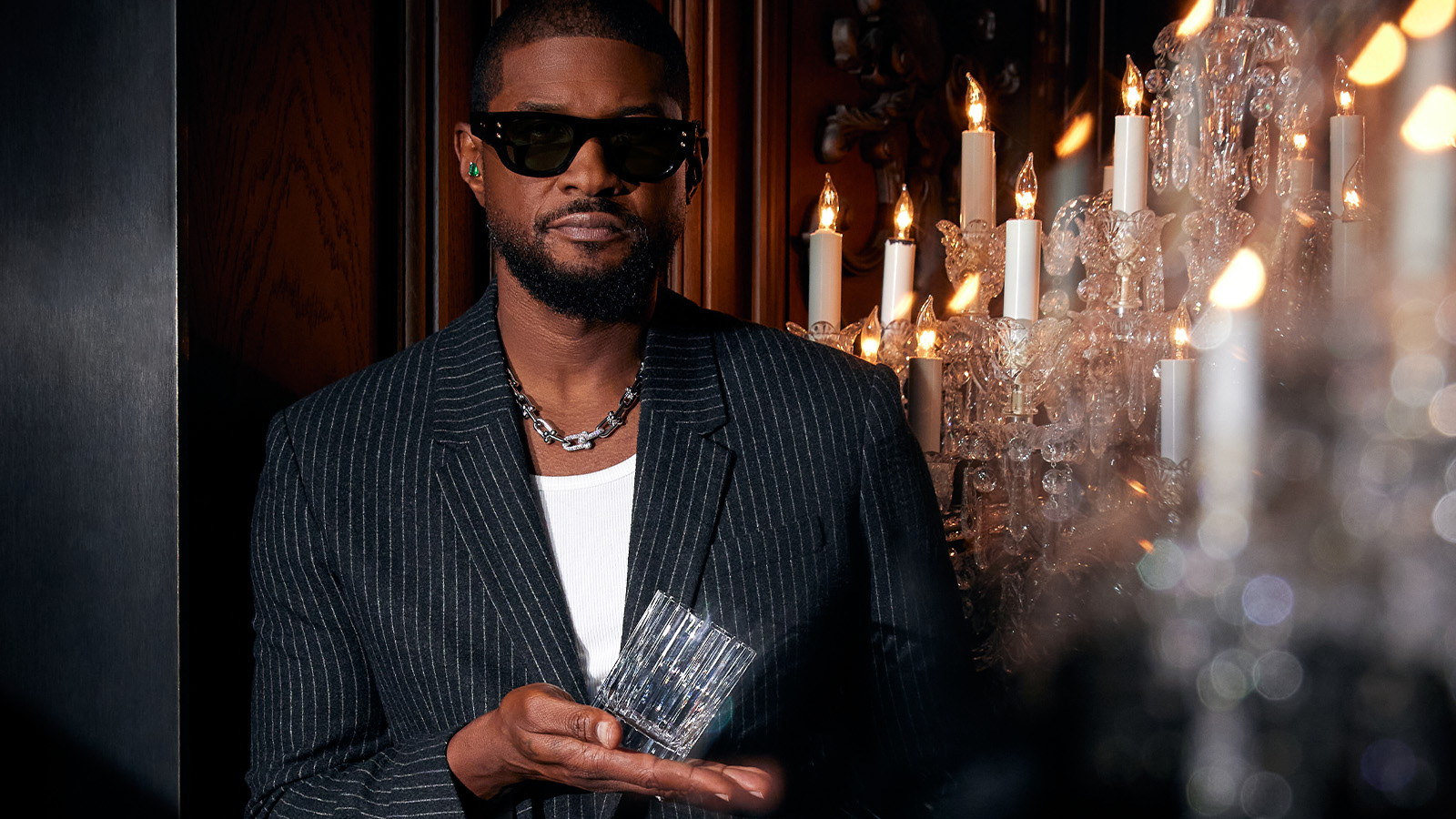 Usher opens up about breakfast playlists, banana pudding and why a glass tumbler is always on his rider
Usher opens up about breakfast playlists, banana pudding and why a glass tumbler is always on his riderOn the heels of a collaboration with Baccarat, the Grammy-winning singer-songwriter breaks down his entertaining tips. 'Hosting is an expression of how you feel about your guests and also who you are.'
-
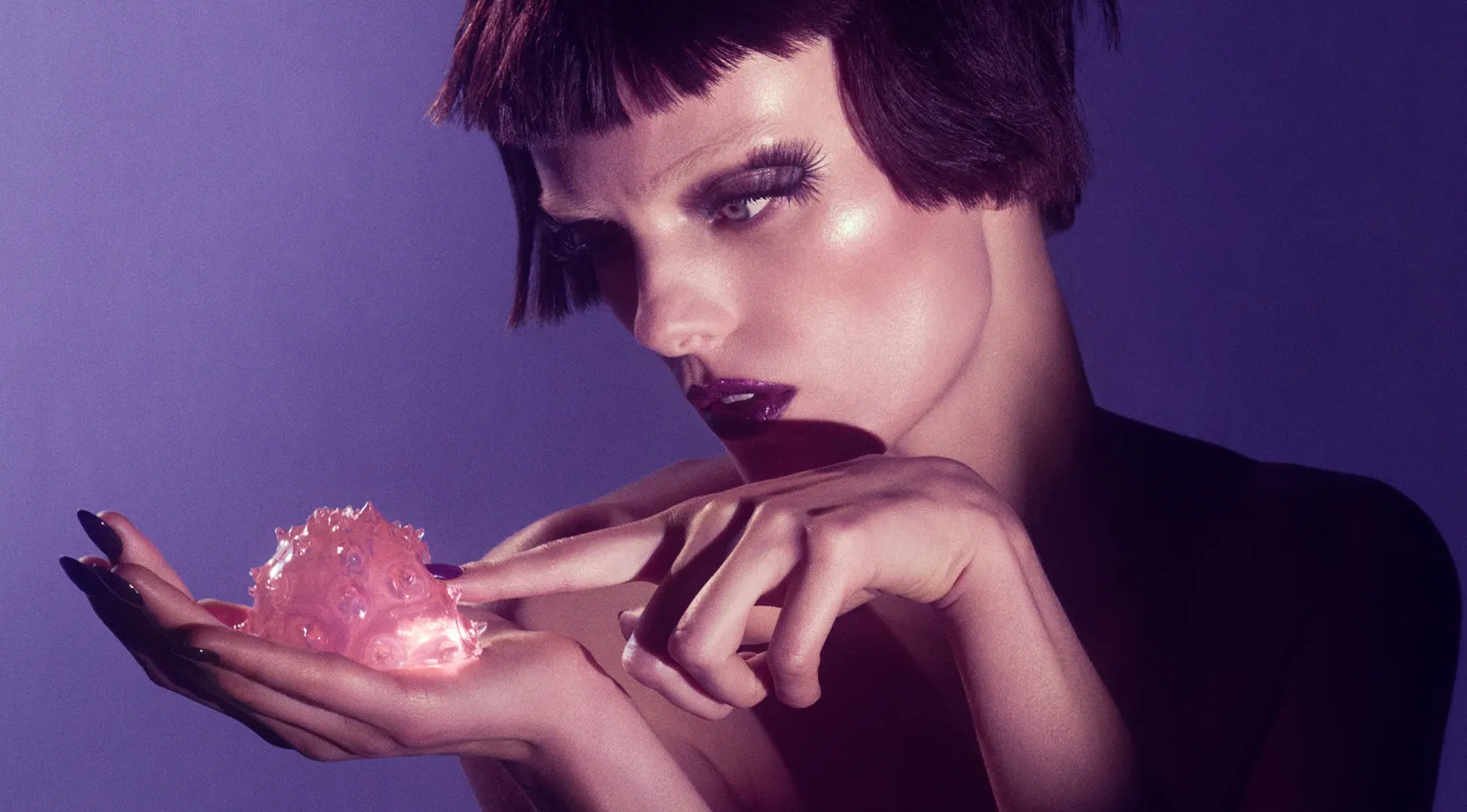 The beauty trends that will define 2026, from ultra-niche fragrances to anti-ageing dental care
The beauty trends that will define 2026, from ultra-niche fragrances to anti-ageing dental careAs we enter the new year, we speak to experts in fragrance, skincare, aesthetics, wellness and more about the trends that will be shaping the way we look
-
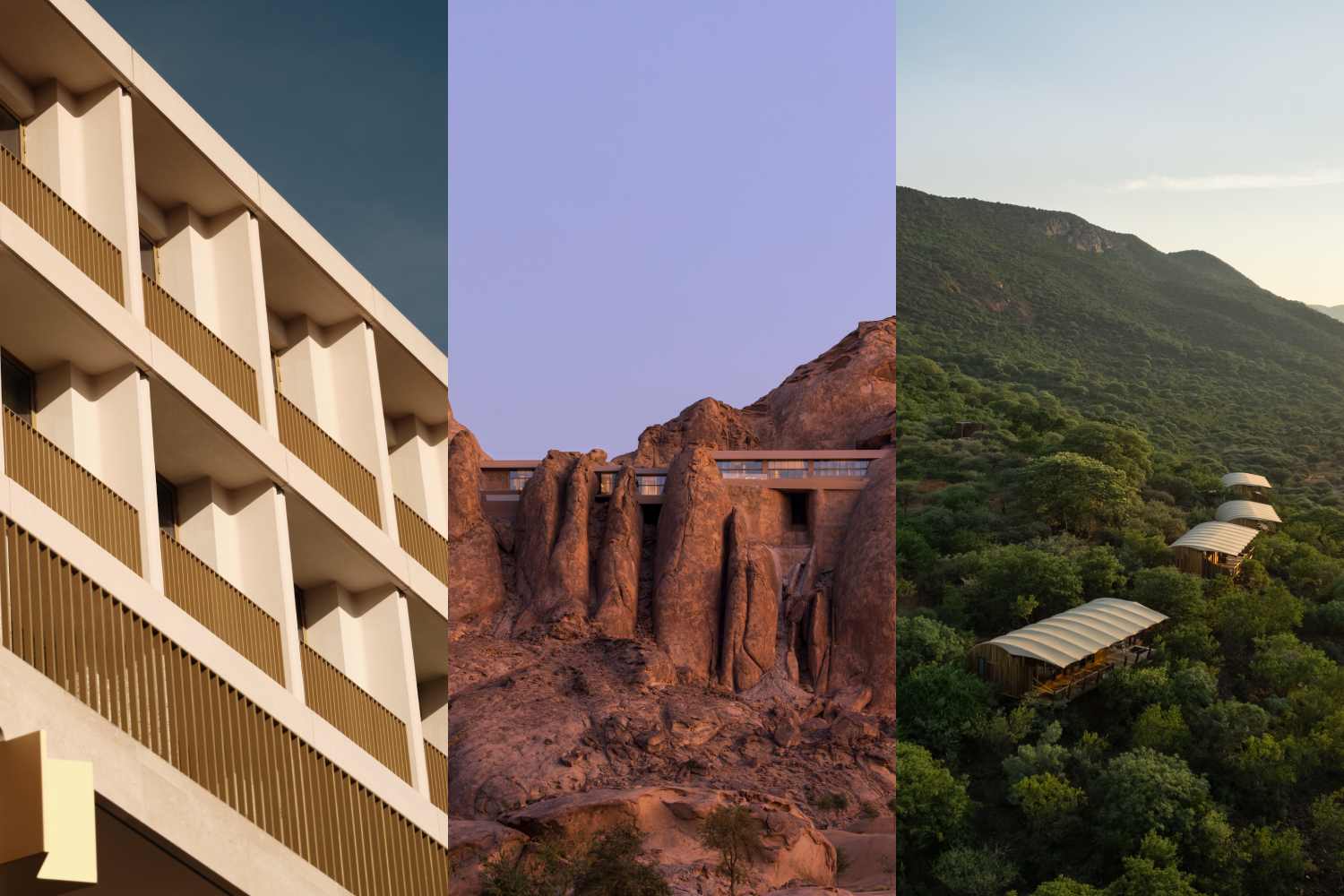 The most stylish hotel debuts of 2025
The most stylish hotel debuts of 2025A Wallpaper* edit of this year’s defining hotel openings. Design-led stays to shape your next escape
-
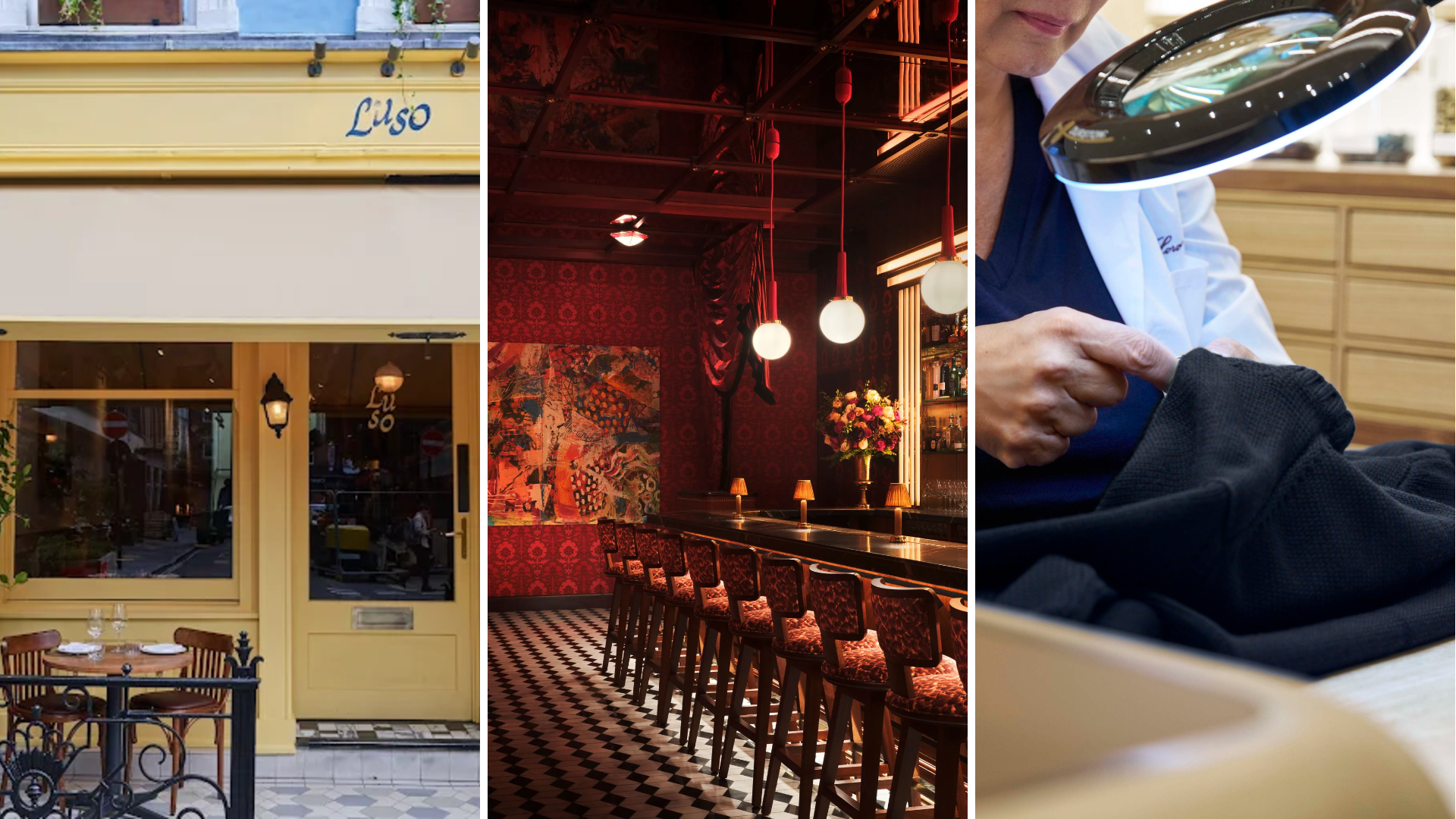 Out of office: The Wallpaper* editors’ picks of the week
Out of office: The Wallpaper* editors’ picks of the week'Tis the season for eating and drinking, and the Wallpaper* team embraced it wholeheartedly this week. Elsewhere: the best spot in Milan for clothing repairs and outdoor swimming in December
-
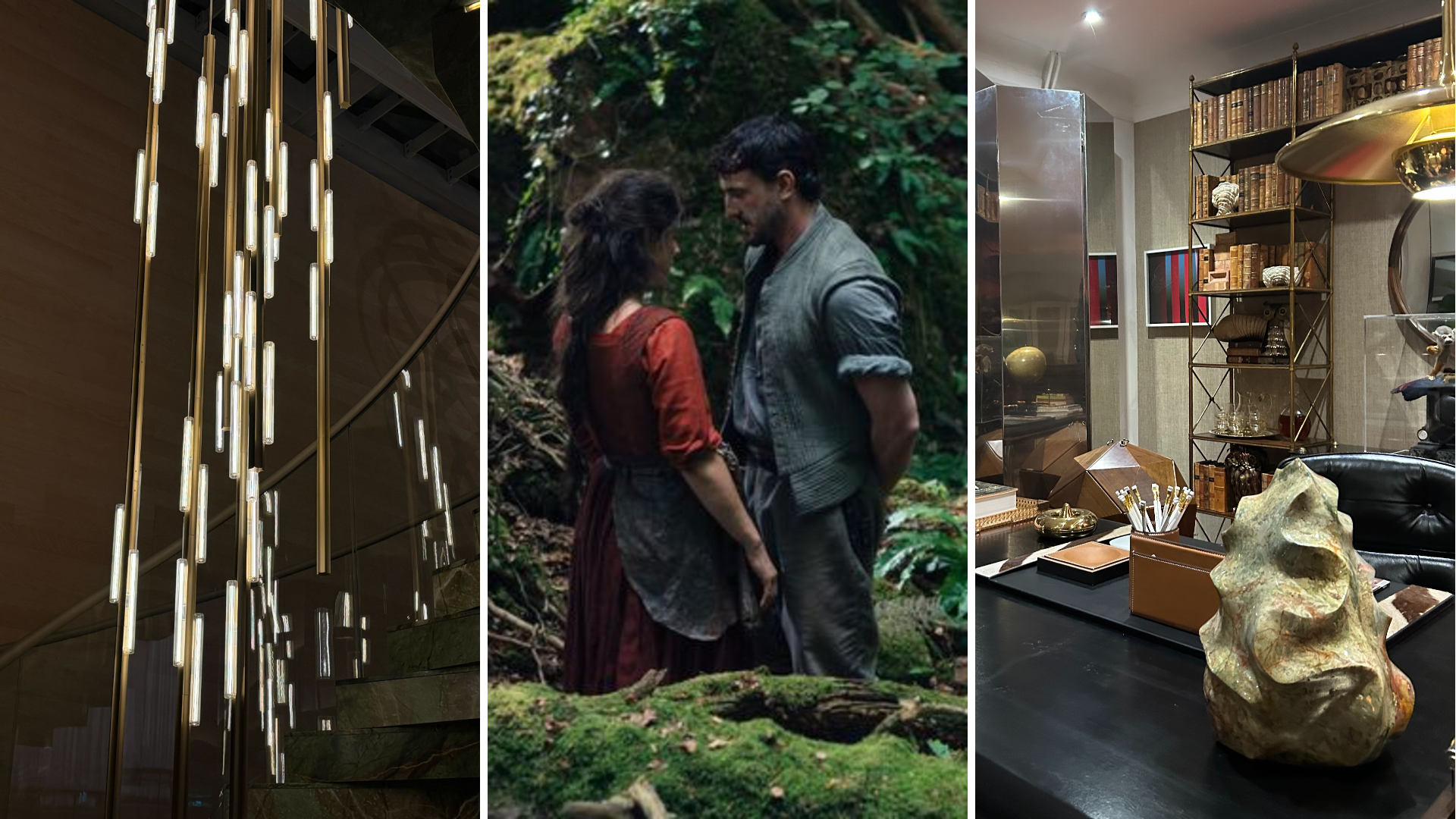 Out of office: The Wallpaper* editors’ picks of the week
Out of office: The Wallpaper* editors’ picks of the weekFar from slowing down for the festive season, the Wallpaper* team is in full swing, hopping from events to openings this week. Sometimes work can feel like play – and we also had time for some festive cocktails and cinematic releases
-
 The Barbican is undergoing a huge revamp. Here’s what we know
The Barbican is undergoing a huge revamp. Here’s what we knowThe Barbican Centre is set to close in June 2028 for a year as part of a huge restoration plan to future-proof the brutalist Grade II-listed site
-
 Out of office: The Wallpaper* editors’ picks of the week
Out of office: The Wallpaper* editors’ picks of the weekIt’s wet, windy and wintry and, this week, the Wallpaper* team craved moments of escape. We found it in memories of the Mediterranean, flavours of Mexico, and immersions in the worlds of music and art
-
 Each mundane object tells a story at Pace’s tribute to the everyday
Each mundane object tells a story at Pace’s tribute to the everydayIn a group exhibition, ‘Monument to the Unimportant’, artists give the seemingly insignificant – from discarded clothes to weeds in cracks – a longer look
-
 Out of office: The Wallpaper* editors’ picks of the week
Out of office: The Wallpaper* editors’ picks of the weekThis week, the Wallpaper* team had its finger on the pulse of architecture, interiors and fashion – while also scooping the latest on the Radiohead reunion and London’s buzziest pizza
-
 Out of office: The Wallpaper* editors’ picks of the week
Out of office: The Wallpaper* editors’ picks of the weekIt’s been a week of escapism: daydreams of Ghana sparked by lively local projects, glimpses of Tokyo on nostalgic film rolls, and a charming foray into the heart of Christmas as the festive season kicks off in earnest
-
 Wes Anderson at the Design Museum celebrates an obsessive attention to detail
Wes Anderson at the Design Museum celebrates an obsessive attention to detail‘Wes Anderson: The Archives’ pays tribute to the American film director’s career – expect props and puppets aplenty in this comprehensive London retrospective